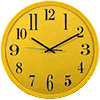- Enter a date and time for the initial date.
- Select calendar units (e.g., days, weeks, months, years).
- Select an operation (add or subtract).
- Enter the amount to calculate with.
- Click "Calculate" to perform the calculation and view the result.
- Calculation details and history will be displayed below.
- Use "Clear" to reset the inputs, and "Copy" to copy the result to the clipboard.
A date ± calendar units calculator is a tool that helps add or subtract specific calendar units, such as years, months, weeks, or days, to a given date. These calculators are commonly used to calculate future or past dates, determine age or time intervals, and schedule events or appointments.
Concepts and Formulae
The concept of adding or subtracting calendar units to a date is based on the Gregorian calendar, which is the most widely used calendar in the world. The Gregorian calendar consists of 365 days in a year, with an extra day (leap day) added every four years to account for the Earth’s slightly irregular orbit around the sun.
Adding calendar units to a date involves incrementing the date by the specified number of units, taking into account leap years and the varying lengths of months. For instance, adding one year to a date in February will result in the same date in February of the following year, except in leap years when it will result in the date of March 1st.
Subtracting calendar units from a date involves decrementing the date by the specified number of units, considering leap years and month lengths. For example, subtracting one month from a date in January will result in the same date in December of the previous year.
Benefits of Using a Date ± Calendar Units Calculator
Using a date ± calendar units calculator offers several benefits, including:
- Efficiency: Calculating dates manually can be time-consuming and error-prone, especially when dealing with leap years and month lengths. A date ± calendar units calculator can quickly and accurately add or subtract calendar units to any given date.
- Accuracy: Manual calculations are susceptible to errors, such as miscounting days or overlooking leap years. A date ± calendar units calculator eliminates human error and ensures accurate results.
- Versatility: These calculators can handle a wide range of dates, from historical dates to future dates, and can add or subtract various calendar units, including years, months, weeks, and days.
- Accessibility: Date ± calendar units calculators are readily available online and in software applications, making them accessible to a wide range of users.
Interesting Facts about Date Calculations
- The Gregorian Calendar: The Gregorian calendar was introduced in 1582 by Pope Gregory XIII to replace the Julian calendar, which had become inaccurate due to its imprecise leap year rule. The Gregorian calendar is more precise and has been adopted by most countries worldwide.
- Leap Years: Leap years are years with 366 days instead of the usual 365 days. They occur every four years, except for years that are divisible by 100 but not divisible by 400. For instance, the year 2000 was a leap year, while the year 1900 was not.
- Month Lengths: The Gregorian calendar has 12 months, with varying lengths ranging from 28 to 31 days. February has the shortest length, 28 days, but 29 days in leap years.
- Dating Systems: Various dating systems have been used throughout history, including the Julian calendar, the Islamic calendar, and the Hebrew calendar. Each system has its own unique rules and conventions for calculating dates.
References
- Meeus, J. H., & Vitagliano, A. (2006). The essential handbook of astronomy (2nd ed.). Academic Press.
- Royal Observatory Greenwich. (2023). Explanatory Supplement to the Astronomical Almanac (ESA). HM Nautical Almanac Office.
- Tucker, R. H. (1974). Gregorian calendar: A historical overview and explanation of the leap year. American Journal of Physics, 42(1), 47-52.
Conclusion
Date ± calendar units calculators are valuable tools that simplify date calculations and ensure accuracy. They are widely used in various contexts, including personal planning, business scheduling, historical research, and scientific computations. By providing a quick and reliable way to add or subtract calendar units to any given date, these calculators make it easier to manage time and navigate the complexities of the calendar system.
